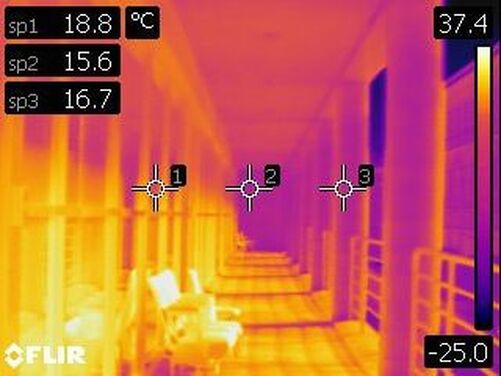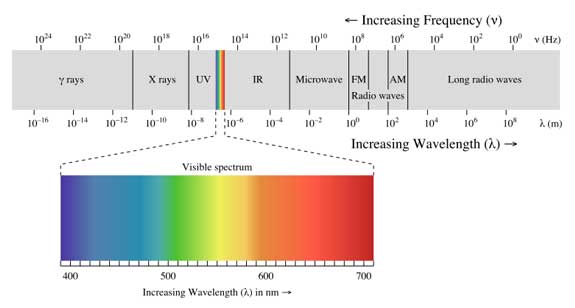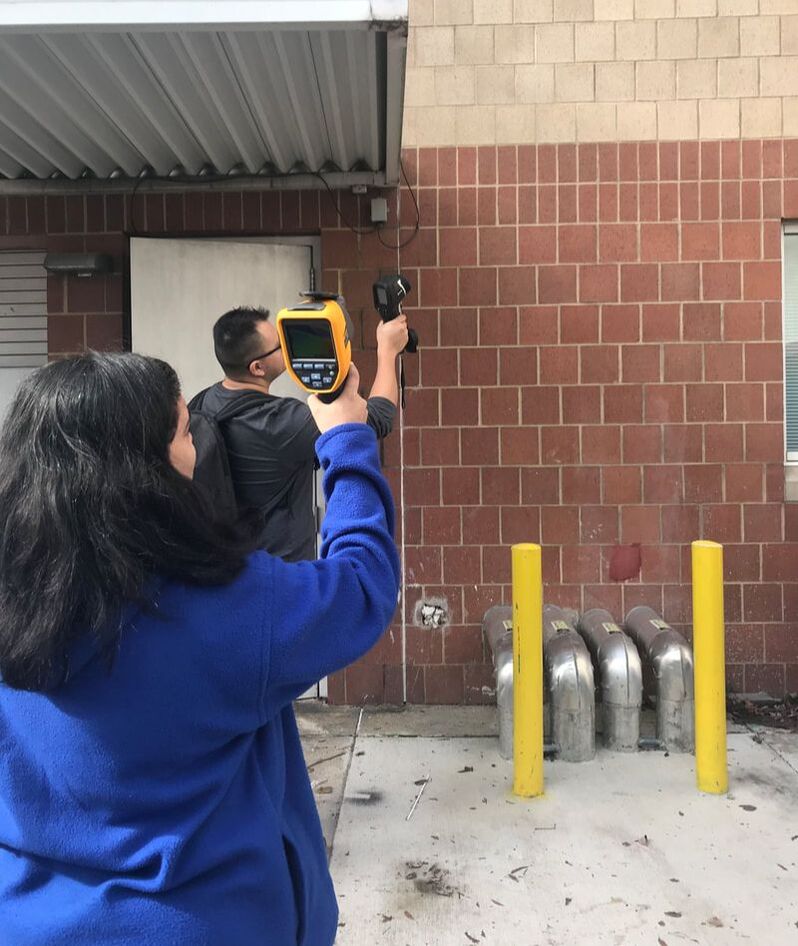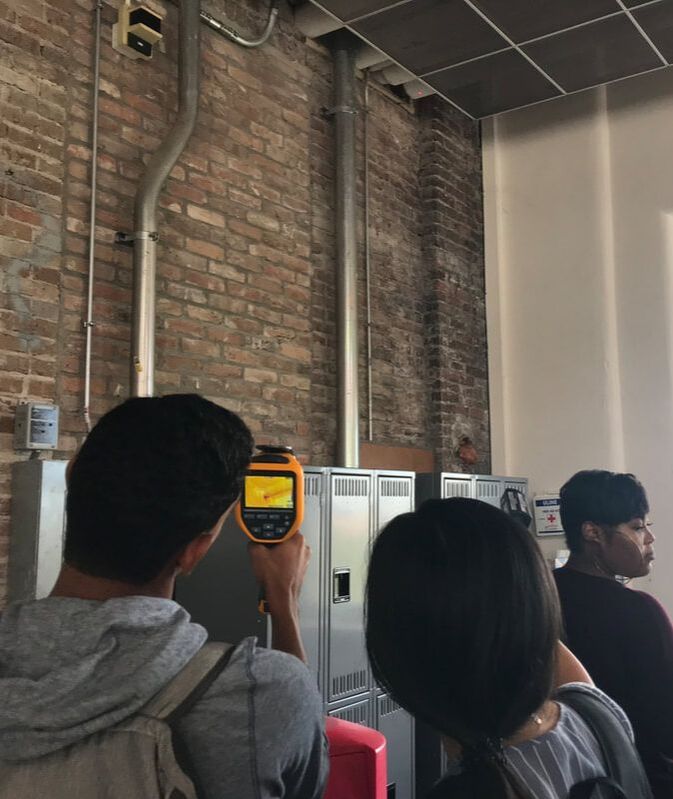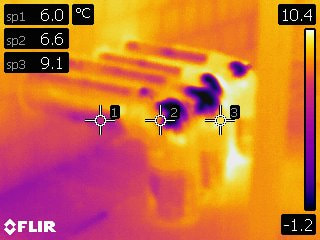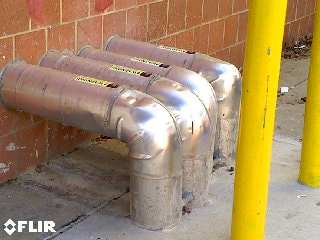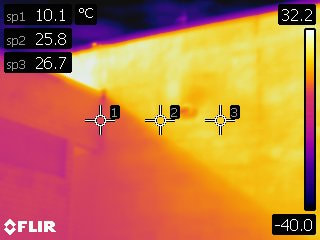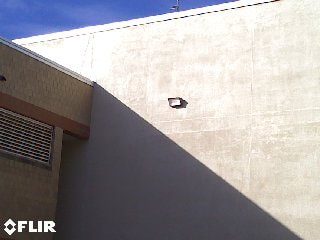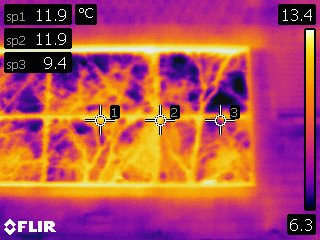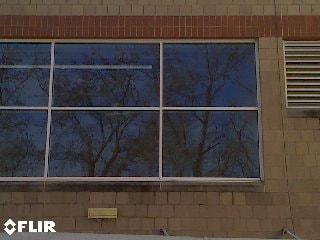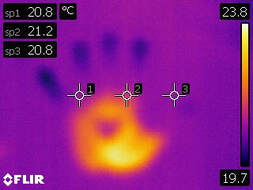|
Image by PhysicsCentral.com
|
Thermal ImagingVisible light only accounts for only a small portion of the total light in the universe. Also known as thermography, thermal images use radiation in the long-infrared range of the electromagnetic spectrum to produce images. These are the waves that we can feel but cannot see with the human eye - the image below left shows the range of the electromagnetic spectrum - Infrared (IR) waves are just right of the visible spectrum. All objects (above absolute zero) emit infrared radiation with or without visible illumination (light). Thermal cameras are often used in medicine and surveillance, however we use it for building diagnostics to observe heat loss through building envelopes. As a note, it is difficult to get accurate temperatures with infrared photos so it is best used for comparison purposes only.
Each material has a different emissivity - the material's ability to emit thermal radiation. This may vary by temperature and infrared wavelength. The range is from 0-1. Silver, for example has a low emissivity of .02, meaning it will mostly reflect heat. Asphalt, on the other hand, has a high emissivity of .98 which will largely absorb heat. You may hear of low-emissivity (or low-e) windows - these windows use transparent coatings to emit less thermal radiation than ordinary windows (reduces heat loss through a window compared to uncoated glass) |
The students spent some time walking around the buildings they were most comfortable with to discover thermal leaks in building envelopes. We had two thermal cameras plus two additional infrared thermometers (otherwise known as "temperature guns")
|
|
Click to view the video |
Impact of thermal bridging on buildings...
